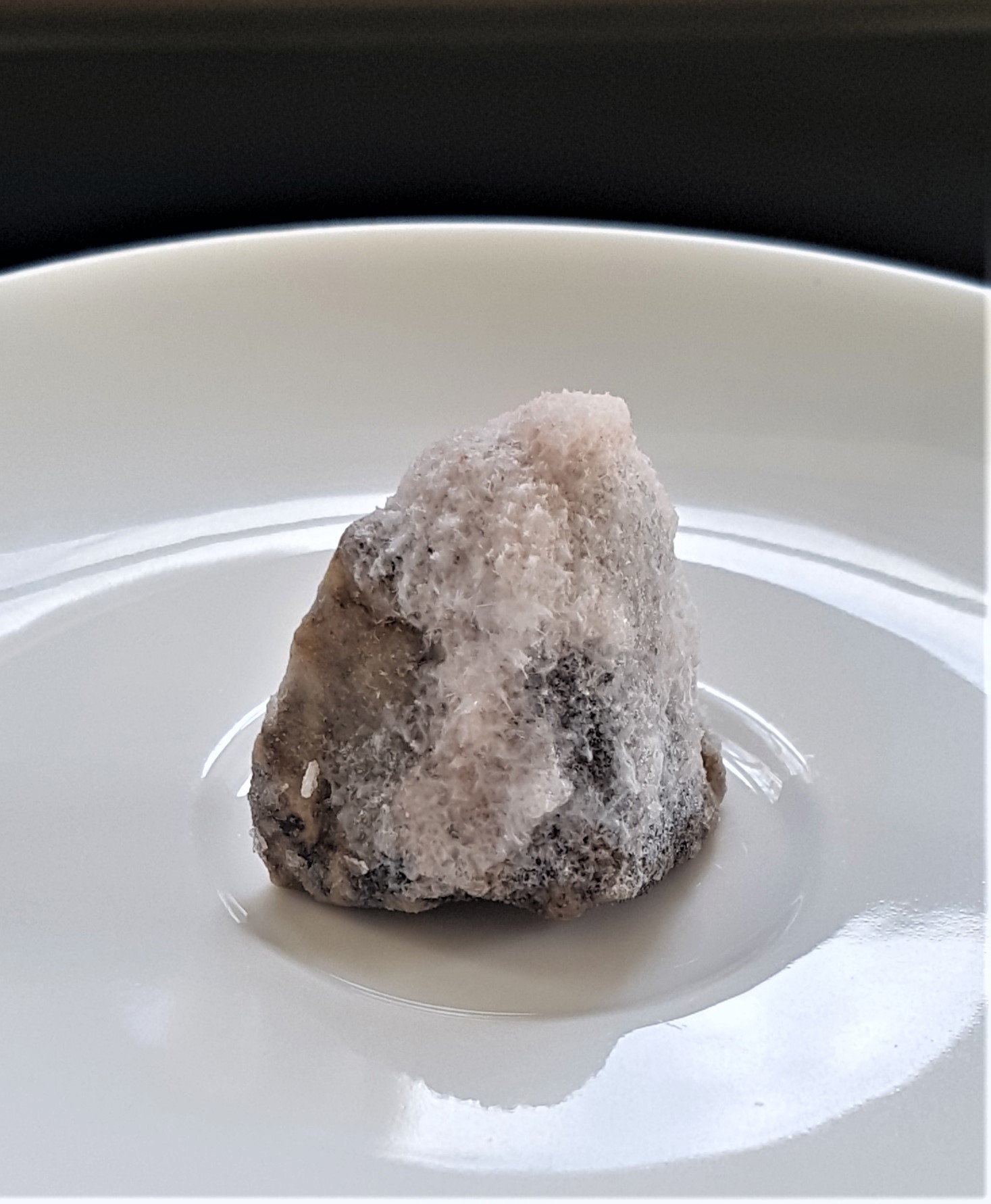In February we ran a workshop at the RCA Sculpture department called Culinary Forensics Kitchen (CFK). Students from the Royal College of Art, Sculpture Department participated and with their permission we share some of their explorations and sketches here.
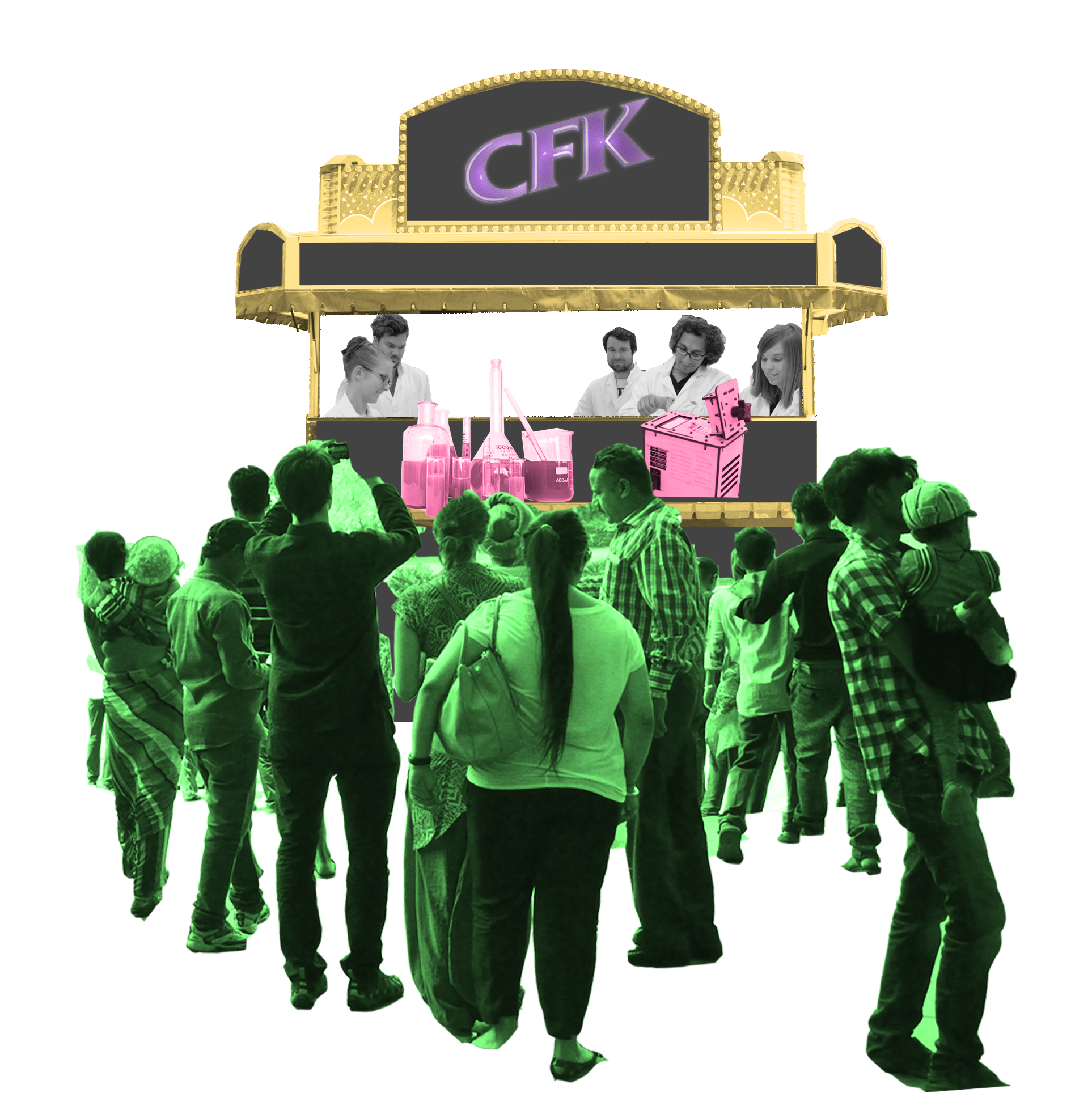
We asked: What interesting and unexpected stories about the food system await us in the kitchen? The CFK will be a chance for you to acquire, cook with and understand ingredients you can access in a new way.
The students developed research themes, prototyped a recipe and recorded it by shooting and editing short video clips, taking photographs and/or writing out a recipe.
A. HAVE BERRY NICE MEAL / Lea Rose Kara
Researching into the tomato’s impressive history revealed how its name and shape changed throughout its travels around the world. From being named ‘tomatl’ by the Aztec’s to ‘tomate’ by the Spanish and finally becoming our British ‘tomato’ the fruit evolved from being pea sized to big ‘meaty’ forms.
Questioning why we have become fascinated with naming things with other things such as cherry tomato, plum tomato, and my favourite, beefsteak tomato. I experimented with creating a more visually accurate representation of the later by playing with the fruit’s materiality. Using tinned tomatoes, I cut very thin slices and allowed the soft mushy texture to dehydrate in the oven. The outcome was a carpaccio look-alike! (very fitting since the tined tomatoes came from Italy). The images are a playful visual illusion, a suggestion of something being other than itself, not dissimilar to the way we use words to classify, identify and represent.
“Funny how we name food with other food. Maybe this is what Beefsteak tomato should really look like.“

B. MISANCA / LUCIJA KRIZMAN
The ingredients used in this animation are locally sourced/collected while filming the latest video for my installation in the Zadar region of Croatia. Misanca and Sipa represent Dalmatian history since generations survived living of the land during the difficult times. Today we are facing different challenges but maybe more than ever the question can we survive if being left somewhere in the unknown without the internet and access to a supermarket is relevant.
“Could you source your ingredients if left without internet and access to a supermarket?”
C. PACIFIC SOIL / Samuel Domínguez
This recipe was inspired by the North of Chile and the amazing geography that confronts the Pacific Ocean with dry mountains and the desert. The main ingredient is the chilean papa (potato in Quechua). The potatoes are injected with sea water before cooking. The cooking method is based on the idea of employing the soil, referencing the indigenous cultures in South America. By simply using the clay from the soil, the potatoes are covered with a one centimetre layer and placed directly into the fire. After cooking for an hour or two, the crust needs to be opened with a small hammer, cracking the hard clay. For serving, ocean foam is added, which is made using sea water and a high-speed processing machine. Rosemary can be optionally added. The result is about geography, texture, smells and flavour.
“Inspired by the geography in the north of Chile, Pacific Soil is a confrontation between the dryness of the mountains represented by the papa (potato in Quechua) and the salinity of the Pacific Ocean using foam.“
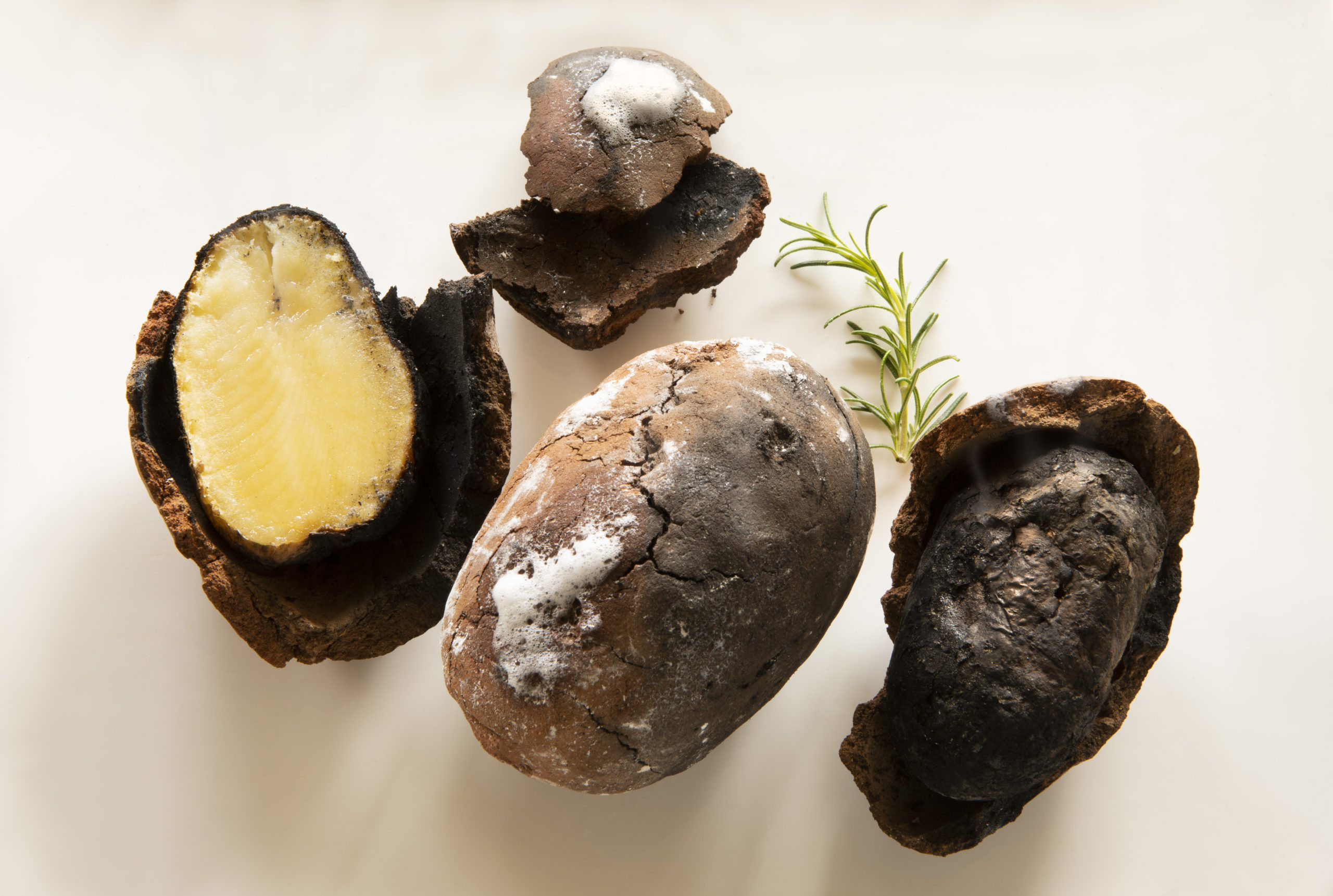
(Photo: Max Donoso)
D. BREAKFAST EVENT: STILL LIFE WITH RED STAR / PATRICK JONES
Where have all the yellow grapefruits gone? In the monstrous search for the optimal variety of grapefruit, Red Star was born. The almost seedless bright red neutron generated mutation takes us one step closer to the…
“Breakfast with a genetically modified grapefruit”
E. LOST AT SEA RISOTTO / KATHRYN MAGUIRE
In the time of the great pandemic, the people were locked into their homes, boats and sheds. The travellers and seafarers were landed. This recipe is for any Earthly and Sea Faring Folks, it takes inspiration from the various folk traditions of using what is close by, and the ancient tradition of foraging and kelping. The primary ingredients are full of antidepressants and antioxidants, and have a feel good effect in these dark days. The smell of the sea is a powerful healing smell. In these days where Covid can destroy the power of the sense of smell, this is a good exercise for the nose. Smell training should perhaps be a daily habit. Eat with the nose. Get those receptors and pathways working.
“Smell the Atlantic with this seakelp risotto, fit for a pirate.”
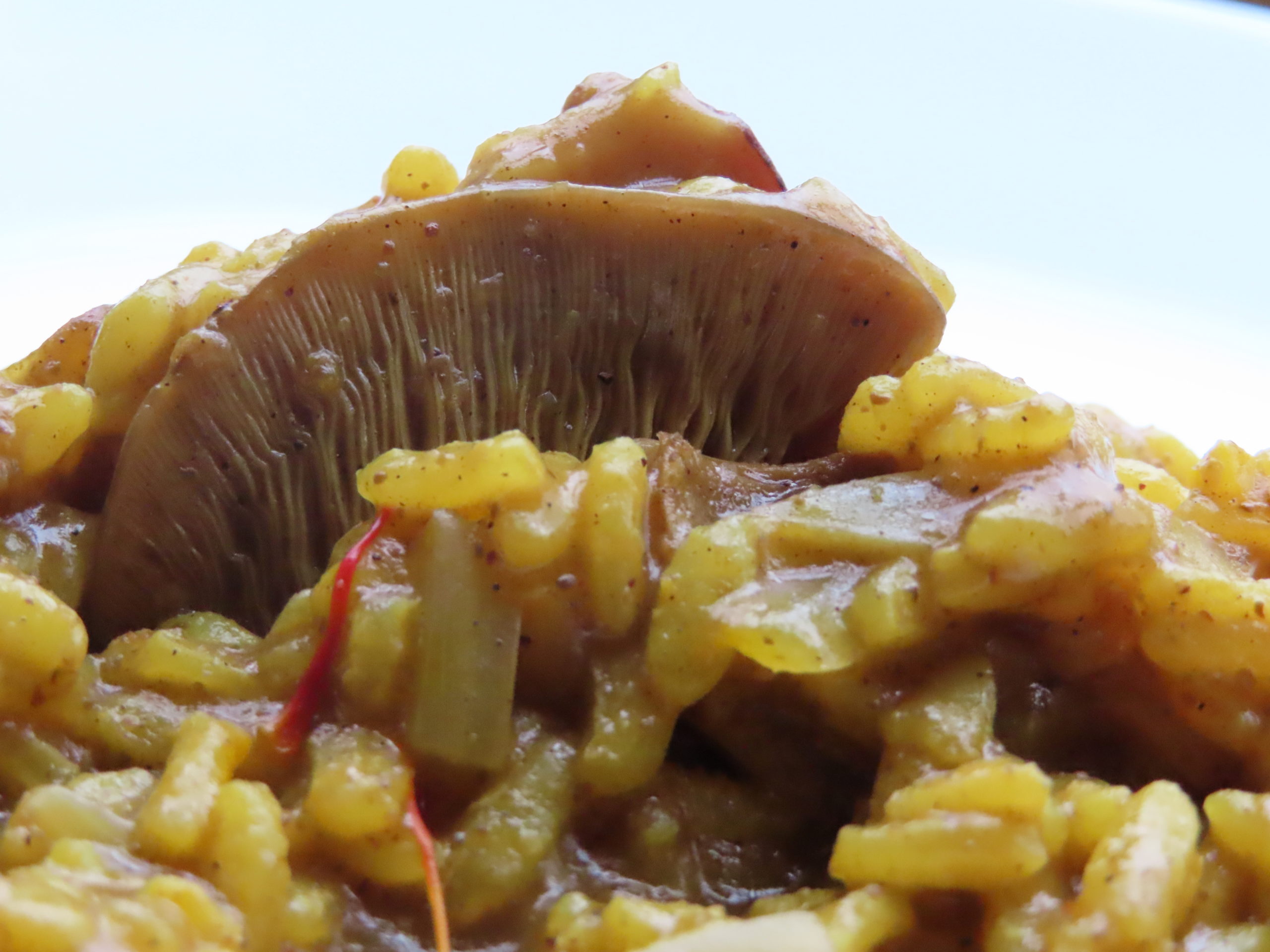
F. LITTLE APPLE BOATS / CONGCONG WU
I wanted to use the Chinese apple and British chips to make some interesting sculpture things and the final work looks like the apple boat. And I draw and blur the background to make the image look more cartoonish–like the apple boats are sailing on the apple juice sea in an imagined world. And I experimented with the interaction between the cultures, between the natural food and junk food and between the crispy and mushy food.
“Some funny interaction between the cultures, between the natural food and junk food and between the crispy and mushy food.”
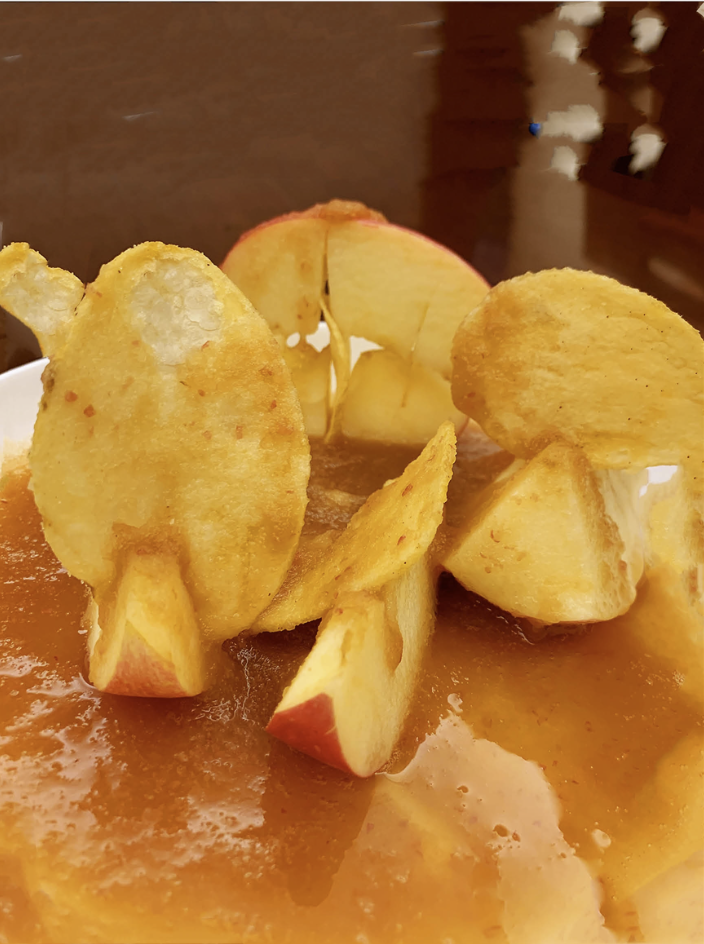
G. HOW TO: DIY ATLANTIC OCEAN WATER / Inês Coelho da Silva
H. HIMALAYAN ROCK SALT RECIPE CARD / SHIRLEY RENWICK
Ingredients:
Salt (not from Himalayan mountains)
Underpaid worker to mine, home carer would do
Explosives, hand tools, do not use machines
Rock (local stone)
Water (local tap)
Method:
Mix salt in water until it does not dilute any more.
If rock is too large to carry, place explosive in a drilled hole first.
Pour mixture over rock ( mimic rock in sea)
Wait a few days (for human-made sea water to dehydrate away)
Chip away crystals and ship around the world, preferably in plastic, before consuming.
You may need to prevent local animal from licking stone
“Make your own fake food: Himalayan rock salt”
